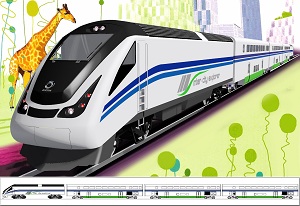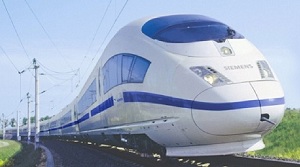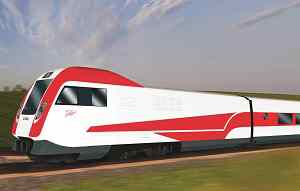High vs. Really High Speed Rail
Why IPRA Endorses 110 mph Rail
The term "high speed rail" causes much confusion due to the fact that there is no universal definition or global standard to accompany it. The US DOT's April 2009 report provides some clarity regarding the various forms of passenger rail service being considered for the United States. [1]
Definitions: High-Speed Rail (HSR) and Intercity Passenger Rail (IPR)
- HSR - Express. Frequent, express service between major population centers 200-600 miles apart, with few intermediate stops. Top speeds of at least 150 mph on completely grade-separated, dedicated rights-of-way (with the possible exception of some shared track in terminal areas). Intended to relieve air and high-way capacity constraints.
- HSR - Regional. Relatively frequent service between major and moderate population centers 100-500 miles apart, with some intermediate stops. Top speeds of 110-150 mph, grade-separated, with some dedicated and some shared track (using positive train control technology). Intended to relieve highway and, to some extent, air capacity constraints.
- Emerging HSR. Developing corridors of 100-500 miles, with strong potential for future HSR Regional and/or Express service. Top speeds of up to 90-110 mph on primarily shared track (eventually using positive train control technology), with advanced grade crossing protection or separation. Intended to develop the passenger rail market, and provide some relief to other modes.
- Conventional Rail. Traditional intercity passenger rail services of more than 100 miles with as little as one to as many as 7-12 daily frequencies; may or may not have strong potential for future high-speed rail service. Top speeds of up to 79 mph to as high as 90 mph generally on shared track. Intended to provide travel options and to develop the passenger rail market for further development in the future.
IPRA's Reasons for Supporting an HSR - Regional Model
Why does the Indiana Passenger Rail Alliance endorse 110 mph speeds (defined most closely by the DOT as HSR - Regional), while some aim for 220 mph (similar to the DOT's HSR - Express definition)? Bruce Rushton, from The State Journal-Register (Springfield, IL), compared the requirements of the two systems in a 2009 article.[2]
Summarized, the differences between the two approaches are shown in the chart below:
| Description | High Speed | Really High Speed |
| Maximum Speed | 110 mph | 220 mph |
| Power Source | Diesel power | Electrification |
| Signalization | Conventional | New |
| Control Systems | Existing | New |
| Grade Crossings | Existing | Replaced with bridges and tunnels |
| Rail Infrastructure | Existing | New infrastructure with larger radius curves |
| Freight and Passenger Service | Same corridor | Separate corridors |
| Cost | Less | 4-5 times more |
The INHSRA endorses 110 mph high speed rail because of its high benefit-cost ratio. Higher speeds would require procurement of right-of-way land for a new rail line and cost much more for an entirely new, separate system--one without grade crossings; these costs are more likely to overshadow the benefits received. Beyond that, the Environmental Law and Policy Center in Chicago notes that ridership increases only gradually at speeds above 110 mph, while cost increases dramatically--particularly at speeds beyond 150 mph.[3] INHSRA chooses to advocate for 110 mph system, taking an incremental approach that greatly improves existing passenger rail service.
A Look at the Future of Rail Travel in Indiana
Proposed 110 mph Passenger Trains
The following are images provided courtesy of the named manufacturers. Each displays a 110 mph deisel train set proposed for use in the Midwest:
| Alstom Transportation | Bombardier |
 |
 |
| Nippon Sharyo Ltd. | Siemens Mobility |
 |
 |
| Talgo | |

|
[1] Definitions from page 2 of the US DOT report entitled "Vision for High-Speed Rail in America".
[2] Bruce Rushton, The State Journal-Register, "REALLY high-speed rail a better option?", posted October 3, 2009.
[3] Data from the Environmental Law and Policy Center website: "The High-Speed Rail Experience".
